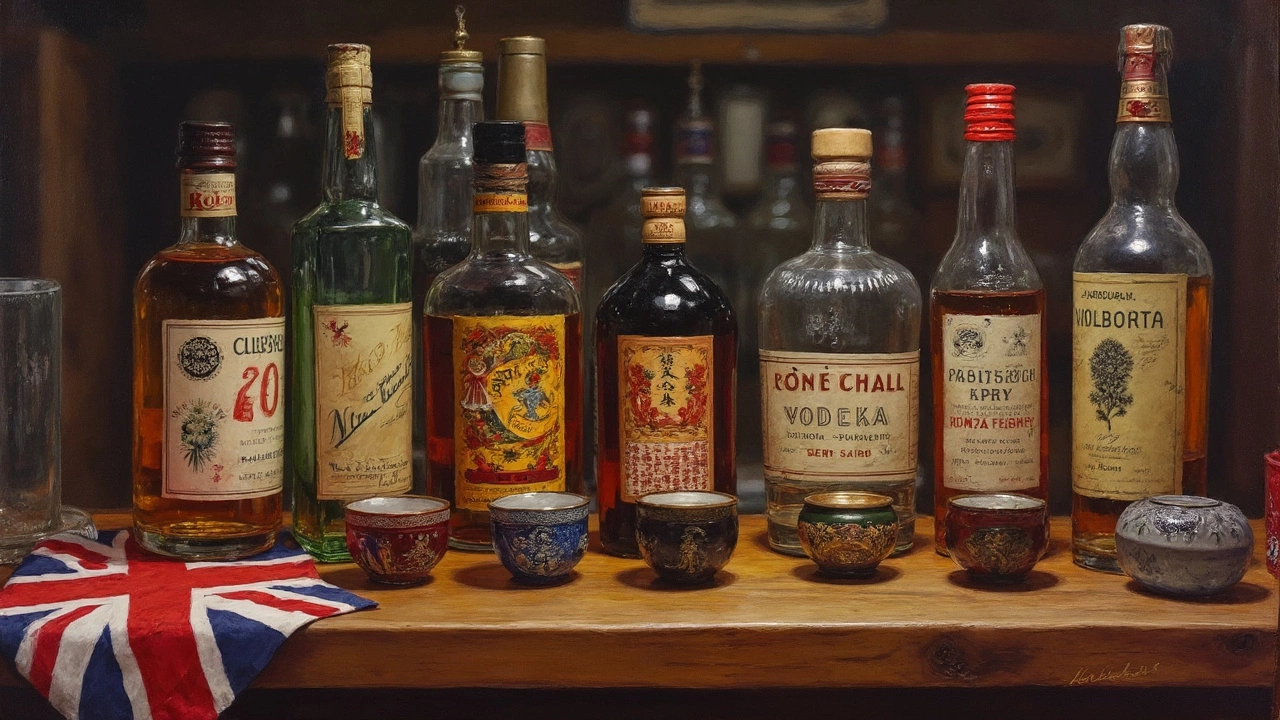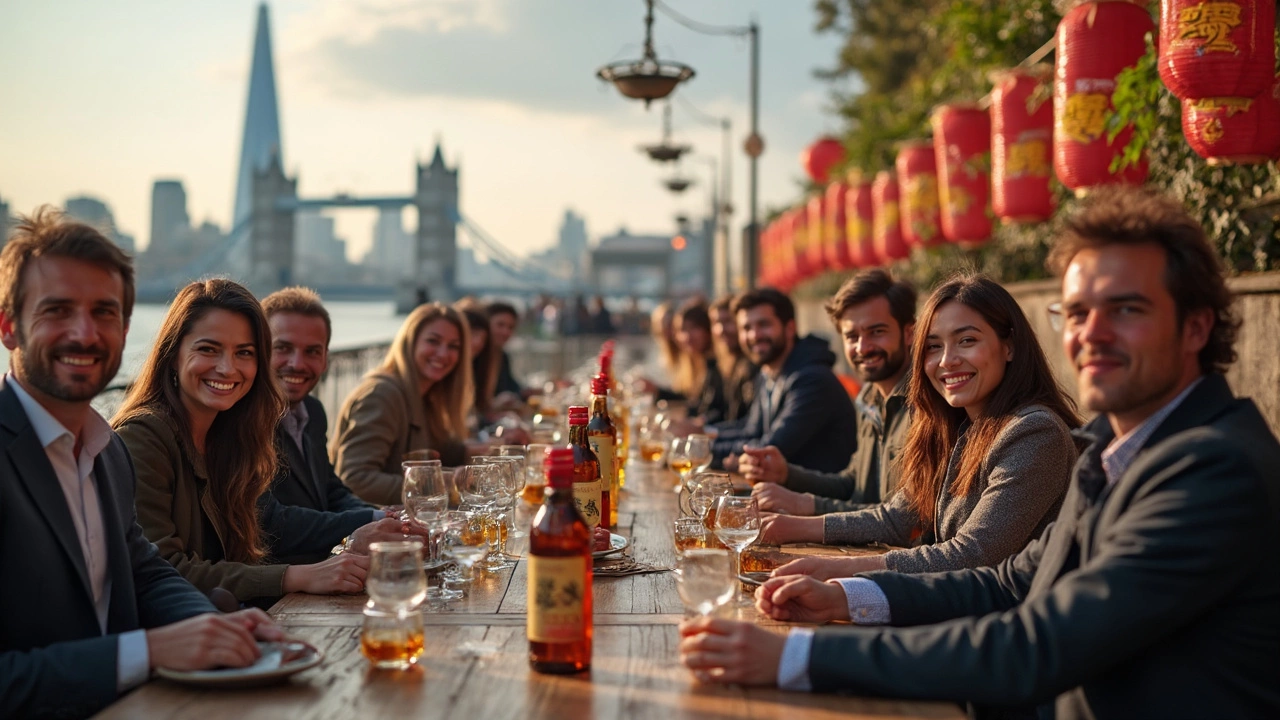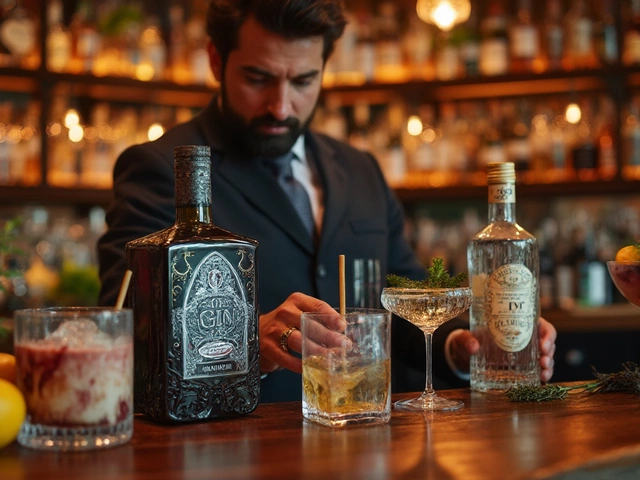You might think vodka or whiskey stands at the top of the world’s drinking charts. Not even close. The most drank spirit—by a mile—is baijiu, a clear liquor from China that most people outside Asia have never tried. It outsells every other spirit on the planet, and it isn’t even a close race. That’s not just trivia. Knowing what tops global sales can change the way you stock your bar, plan a tasting, or even pick your next bottle of something new.
So, what’s the deal with baijiu? Why doesn’t everyone at least know the name if it’s such a giant in the market? That gap between the top-selling spirit and Western favorites like vodka or whiskey has a lot to do with tradition, sheer population size, and unique drinking cultures. If you want to truly understand global drinking trends—or just like to impress your friends at the next tasting—keep reading. There’s a lot more to the story than just shot glasses and brand names.
- Biggest Players in the Spirits Market
- Baijiu: The Best-Selling Spirit You’ve Never Tried
- Vodka, Whiskey, and Other Western Contenders
- Why Is Baijiu So Popular in China?
- What Does Baijiu Taste Like, Really?
- Tips for Tasting the World’s Most Consumed Spirits
Biggest Players in the Spirits Market
Let’s put the numbers on the table. There’s a pack of heavy hitters in the world’s spirits business, but only a few truly dominate the shelves and people’s glasses: baijiu, vodka, and whiskey. Some familiar names, a few surprises.
Check out how global sales stacked up in 2023:
| Spirit | Annual Sales (Million 9L Cases) | Main Market |
|---|---|---|
| Baijiu | ~11,000 | China |
| Vodka | ~500 | Eastern Europe, Worldwide |
| Whiskey | ~400 | USA, Scotland, India |
| Rum | ~150 | Caribbean, Latin America |
| Tequila/Mezcal | ~60 | Mexico, USA |
Baijiu blows the rest away—no contest. Even if you add vodka and whiskey together, they don’t come anywhere near baijiu. People in China drink more baijiu than the rest of the world drinks vodka, whiskey, rum, tequila, and gin combined.
Here’s why these spirits lead the pack:
- Baijiu: Hugely traditional in China, served at pretty much every family event and banquet.
- Vodka: Bestseller worldwide, especially popular in Russia, Poland, and big party cities everywhere.
- Whiskey: Loved for its complexity and aging, with hotspots in the US and the UK, plus India throwing in crazy high numbers due to sheer population.
So, when people ask about the most drank spirit, it’s not even a close call. Baijiu sits on a throne nobody else can touch.
Baijiu: The Best-Selling Spirit You’ve Never Tried
If you only drink vodka, whiskey, or rum, there’s a mega-popular spirit you’re missing: baijiu. Right now, baijiu holds the global crown. In 2024, Chinese distillers sold over 10 billion liters of the stuff—way more than every brand of vodka combined. We’re not talking about some obscure, trend-chasing bottle here. Baijiu is everywhere in China, served at big family banquets or business dinners, usually in tiny cups that hit hard with just a small pour.
The word “baijiu” just means “white spirit” in Chinese. Don’t picture vodka, though. This drink is made from sorghum (sometimes rice, wheat, or corn), and the way it’s fermented is unique. Clay jars, for one, help create its punchy, funky aroma. You’ll find over 12,000 distilleries in China, with famous brands like Moutai, Wuliangye, and Luzhou Laojiao. Moutai alone racks up sales worth billions of dollars each year and is often gifted at official events.
What really sets baijiu apart? It covers a wild range of flavors. Some taste fruity and sweet, others are savory and honestly, a bit earthy. Drinkers in China know the difference right away, splitting it into categories like “strong aroma,” “light aroma,” or “sauce aroma”—the last one, Moutai style, is the powerhouse you’ll see on fancy tables.
Want a quick list of why baijiu matters?
- China’s population drives massive demand—it’s the default spirit at home, at big dinners, and especially during lunar new year.
- Most consumed spirit by volume, worldwide, every single year.
- Distinct flavor and production methods you won’t find anywhere else. No kidding, the “strong aroma” type can fill up a room.
- Many Westerners are just starting to catch on (swanky bars in New York and London have started stocking baijiu cocktails).
So if you care about the most drank spirit—whether you’re running your next tasting or just feeling curious—baijiu should be on your radar. Don’t be surprised if you see it popping up more often in places you’d never expect.
Vodka, Whiskey, and Other Western Contenders
If you walk into almost any bar outside Asia, you’ll see vodka and whiskey front and center. These two aren’t just popular drinks—they pretty much represent the idea of Western spirits. Vodka sits on top in countries like Russia, Poland, the US, and much of Eastern Europe. Globally, Smirnoff regularly lands on the list of biggest-selling spirit brands that aren’t baijiu. Russians alone, for example, knock back about two billion liters of vodka every year.
On the whiskey side, Scotland and Ireland brought the world Scotch and Irish whiskey, while the US gave us bourbon and Tennessee whiskey. Just for perspective, Jack Daniel’s and Johnnie Walker are household names almost everywhere liquor is sold. Scotch exports bring in nearly $8 billion yearly, with bottles headed to over 180 countries. That’s a huge reach, even by most drank spirit standards.
Other contenders like rum, tequila, and gin also hold their own—especially in cocktail-heavy cultures like the US, UK, and Latin America. Bacardi and Captain Morgan see massive sales, and tequila isn’t just for shots anymore—with brands like Jose Cuervo topping global sales for the category.
- Vodka is still the best-selling western spirit by volume worldwide.
- Whiskey dominates in value—single malt scotches and rare bourbons can sell for thousands per bottle.
- Rum rules the Caribbean and is the go-to base for classics like the mojito and daiquiri.
- Gin’s worldwide comeback means bars everywhere keep favorites like Bombay, Tanqueray, and Hendrick's on hand.
What keeps these spirits so popular? It’s all about taste, mixability, and deep cultural traditions. While baijiu outnumbers them in pure volume, vodka, whiskey, rum, and their cousins keep Western drinkers happy—and still drive most of the global cocktail culture. If you’re stocking a bar or planning a tasting, don’t ignore the classics.

Why Is Baijiu So Popular in China?
If you ever wondered why baijiu dominates the list of most drank spirits, the answer starts with culture. Baijiu isn't just a drink in China—it's pretty much essential at celebrations, business events, family dinners, and national holidays. When someone hosts a wedding or seals a business deal, you can count on baijiu showing up. It’s the go-to for cheers, and refusing it in certain settings can even be seen as rude. This isn’t a recent trend either; people in China have been drinking it for thousands of years.
Let’s talk numbers. More than 10 billion liters of baijiu are consumed in China every year. That’s more than half a liter for every person on the planet—annually, not just once in a while. Here’s a quick look at how baijiu stacks up next to other big spirits:
| Spirit | 2023 Global Sales (Billion Liters) | Main Market |
|---|---|---|
| Baijiu | 10.7 | China |
| Vodka | 4.5 | Russia/Eastern Europe |
| Whiskey | 3.0 | USA/UK/India |
What’s also wild: major companies like Kweichow Moutai and Wuliangye are among the top valued spirits brands worldwide, valued in the tens of billions. And the sheer population of China—over 1.4 billion people—multiplies the effect. That’s not just a few folks sipping a local specialty; it’s an entire nation making baijiu a daily staple.
- It’s part of pretty much every important moment—birthdays, weddings, job promotions, major holidays.
- Gift boxes of baijiu are common corporate gifts, kind of like how people in the West give fancy whiskey at Christmas, but on a way bigger scale.
- Different regions in China have their own baijiu styles and brands, so there’s always variety.
Most drank spirit in China? No contest—it’s baijiu, not just because of taste, but because it’s weaved into almost every Chinese celebration, custom, and connection. If you're traveling there or want to connect with people from China, trying baijiu is a shortcut to understanding their way of celebrating and doing business. It’s more than just a shot; it’s tradition in a glass.
What Does Baijiu Taste Like, Really?
If you've never tried baijiu, expect a serious flavor bomb. There is no one-size-fits-all answer here—baijiu actually comes in a bunch of different styles, and each one tastes completely different. Forget whatever expectations you have from vodka or whiskey. Baijiu is all about being bold, and sometimes even shocking for first-timers.
The flavor really depends on what style you’re sipping. The four main types are called aroma categories: strong aroma, light aroma, sauce aroma, and rice aroma. Here’s a quick rundown of what you might encounter:
- Strong aroma (the most popular): Super fragrant, funky, with notes kind of like pineapple, overripe fruit, and sometimes even cheese. If you love blue cheese or funky craft beer, start here.
- Light aroma: Milder, clean, kind of floral or grainy. Easier for beginners to handle, and usually less challenging.
- Sauce aroma: Think Chinese soy sauce, roasted nuts, and umami. This style is deep, savory, and honestly pretty intense. People say it’s an acquired taste—and they’re not joking.
- Rice aroma: Lightest of the bunch. Gentle, a little sweet, sometimes almost like sake. Good for folks just getting into baijiu.
To put it into perspective, here’s a snapshot of common aroma profiles and what you might pick up when you take a sip:
| Baijiu Style | Main Flavors | ABV Range |
|---|---|---|
| Strong Aroma | Pineapple, banana, floral, funky cheese | 52%–55% |
| Light Aroma | Grain, floral, clean, light fruit | 38%–50% |
| Sauce Aroma | Soy sauce, toasted nuts, earthy, umami | 53%–54% |
| Rice Aroma | Rice, light sweetness, floral, mellow | 35%–45% |
Most baijiu clocks in well over 50% ABV, so don’t be shocked by the burn on your first sip. The best way to try it? Sip small, don’t shoot. Pair it with strong-flavored foods—things like spicy dishes or grilled meats—to balance out the intense flavors.
If you’re wondering how it stacks up next to the most drank spirit in the West, expect baijiu to deliver a much more complex and divisive experience. It’s not meant to be neutral or hide in a mixer. Baijiu is all about flavor—like it or not, you’ll remember your first taste.
Tips for Tasting the World’s Most Consumed Spirits
If you want to try what most of the world is drinking, baijiu should be at the top of your list. This isn’t your regular shot—it comes with a lot of tradition and some big flavors. Here’s how to actually enjoy the experience (and yes, you can learn to like it, or at least respect it).
- Most drank spirit doesn’t mean familiar. Expect surprises—baijiu is famous for strong aromas like soy sauce, overripe fruit, or even floral notes, depending on the style. Don’t compare it to vodka or whiskey right off the bat. Drink it on its own terms.
- If you’re at a tasting or a Chinese meal, remember: baijiu is usually served at room temperature in small glasses—think one or two ounces. It’s meant to be sipped, not knocked back.
- Pairing matters. Baijiu is often paired with spicy or richly flavored foods. The strong notes can actually chill out when you’re eating Sichuan food or anything with bold flavors.
- Go slow. Take a small first sip, let it coat your mouth, and pause. See if you can pick out flavors like fermented grain, tropical fruit, or even a funky cheese vibe from some of the stronger styles (like sauce-aroma baijiu).
- If you want to branch out, try comparing baijiu with vodka, whiskey, or tequila. Pour a flight of half-ounce tastes and notice the differences side by side. Don’t be surprised if baijiu stands out in a big way.
- Curious about brands? Start with something mild like Luzhou Laojiao Zisha Daqu or Shui Jing Fang if you’re new. Save the high-proof, pungent stuff (like Maotai) for when you’re feeling bold or with friends who know the drill.
No matter what, approach global spirits with an open mind. You don’t have to join the billion-plus who drink baijiu every year, but at least now you’ll know what they’re celebrating with—and how to give it a fair shot.


